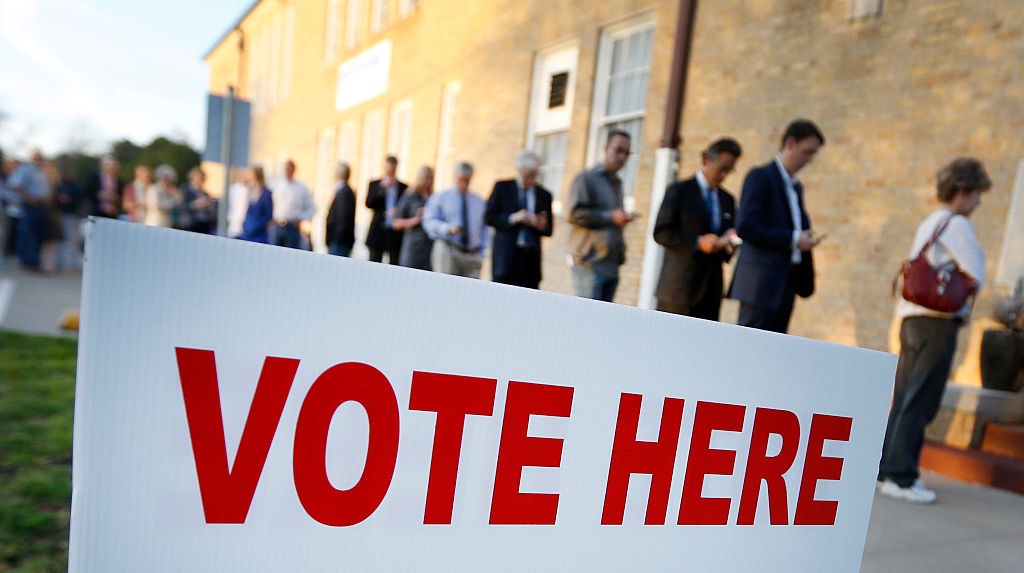The Electoral College: Why 270 Is the Magic Number for Clinton and Trump

On Tuesday (Nov. 8), the 2016 presidential election votes will be tallied and the winner announced — barring any vote count snafus or an Electoral College tie.
As the election of 2000 proved, the Electoral College can make all the difference in the outcome of a presidential race. So how does it work?
When you cast your vote for Hillary Clinton or Donald Trump, you're not actually picking one man or the other. You're voting for his electors, a group of people (usually selected by the political parties) who, in turn, cast their votes for their candidates. Each state gets one elector for each of its representatives in the House of Representatives, plus two for its Senators.
Because House representation is based on population, so is the Electoral College. With 55 electoral votes, California has the most of any state. The least-populated states, including Wyoming, Alaska and the Dakotas, get three electors each, as does the District of Columbia.
That makes for a total of 538 electors in the Electoral College. Candidates need 270 votes to win the presidency.
In most states, the winner of the popular vote takes all of the Electoral College votes in that state. But Maine and Nebraska allocate their electoral votes proportionally, meaning their electoral votes can be split. [Election Day 2016: A Guide to the When, Why, What and How]
The history of the Electoral College
Barack Obama won the 2012 election against Mitt Romney with both the popular vote (51.1 percent) and Electoral College votes (332). But the result of the electoral system is that sometimes the winner of the popular vote does not end up winning the presidency. It happened in 2000, when Al Gore took the popular vote with 50,999,897 supporters to George W. Bush's 50,456,002. But Bush took the Electoral College with 271 votes (after a tough battle over vote counts in Florida), while Gore had 266.
Get the world’s most fascinating discoveries delivered straight to your inbox.
In 1876, Rutherford B. Hayes lost the popular vote to Samuel J. Tilden, but squeaked by in the Electoral College by one vote to win the presidency. Likewise, Benjamin Harrison had more than 90,000 fewer votes than Grover Cleveland in 1888, but he pulled far ahead in the Electoral College, gaining 233 votes to Cleveland's 168 (fewer Electoral College votes were available then).
In perhaps the most unusual electoral vote incident, John Quincy Adams lost both the popular vote and the electoral vote in 1824, yet still managed to become president. Neither Adams nor his opponent, Andrew Jackson, got a majority of electoral votes — at that time, 131. So the decision went to the House of Representatives, who awarded the race to Adams. Adams quickly made the Speaker of the House, Henry Clay, his Secretary of State, prompting Jackson to accuse the two of a "corrupt bargain."
This year's electoral race
Because of the largely "winner-takes-all" electoral system, candidates focus their energies on states that are likely to go either way — swing states. You won't see many campaign stops in reliably Republican Texas in the last hours of the campaign, for example, but swing state Colorado could be crawling with candidates.
Several political analysts have said that while Clinton has several pathways in the Electoral College map to the White House, Trump has just one, and in this winning scenario North Carolina is key. "If Secretary Clinton wins North Carolina, there really is no path for Donald Trump to win the presidency," said Scott Falmlen, the former executive director of the North Carolina Democratic Party, as reported by Politico.
On Monday (Nov. 7), in addition to North Carolina, Clinton visited three other important states: Pennsylvania, Michigan and Pennsylvania, according to ABC News.
According to Politico, this year's swing states are: Colorado, Florida, Iowa, Michigan, Nevada, New Hampshire, North Carolina, Ohio, Pennsylvania, Virginia and Wisconsin. That's a lot of electoral votes that could swing one way or another.
Editor's Note: This article was first published on Nov. 5, 2012.
Original article on Live Science.

Stephanie Pappas is a contributing writer for Live Science, covering topics ranging from geoscience to archaeology to the human brain and behavior. She was previously a senior writer for Live Science but is now a freelancer based in Denver, Colorado, and regularly contributes to Scientific American and The Monitor, the monthly magazine of the American Psychological Association. Stephanie received a bachelor's degree in psychology from the University of South Carolina and a graduate certificate in science communication from the University of California, Santa Cruz.


